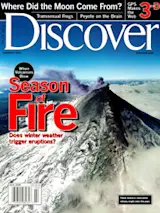On the edge of the Gulf of Alaska, surrounded by serene wilderness, North America's most active volcano regularly builds toward bursting. Pavlof has erupted 40 times in just over 200 years, heaving tons of ash and Volkswagen-size chunks of glowing debris skyward. Unlike many active volcanoes, this one isn't much of a threat to anyone. The nearest towns, King Cove and Cold Bay, are more than 30 miles away and have populations of less than 1,000 people combined. Still, Pavlof is one of the most-studied volcanoes in the world because its restless rumblings offer a good laboratory to help geologists understand how to predict when other volcanoes are likely to kill.
Steve McNutt, a boyish, bearded volcanologist at the University of Alaska, has participated in this Pavlof vigil for more than two decades. Early on in his watch, McNutt noticed that the volcano's eruptions followed a surprisingly regular pattern. Periods ...














